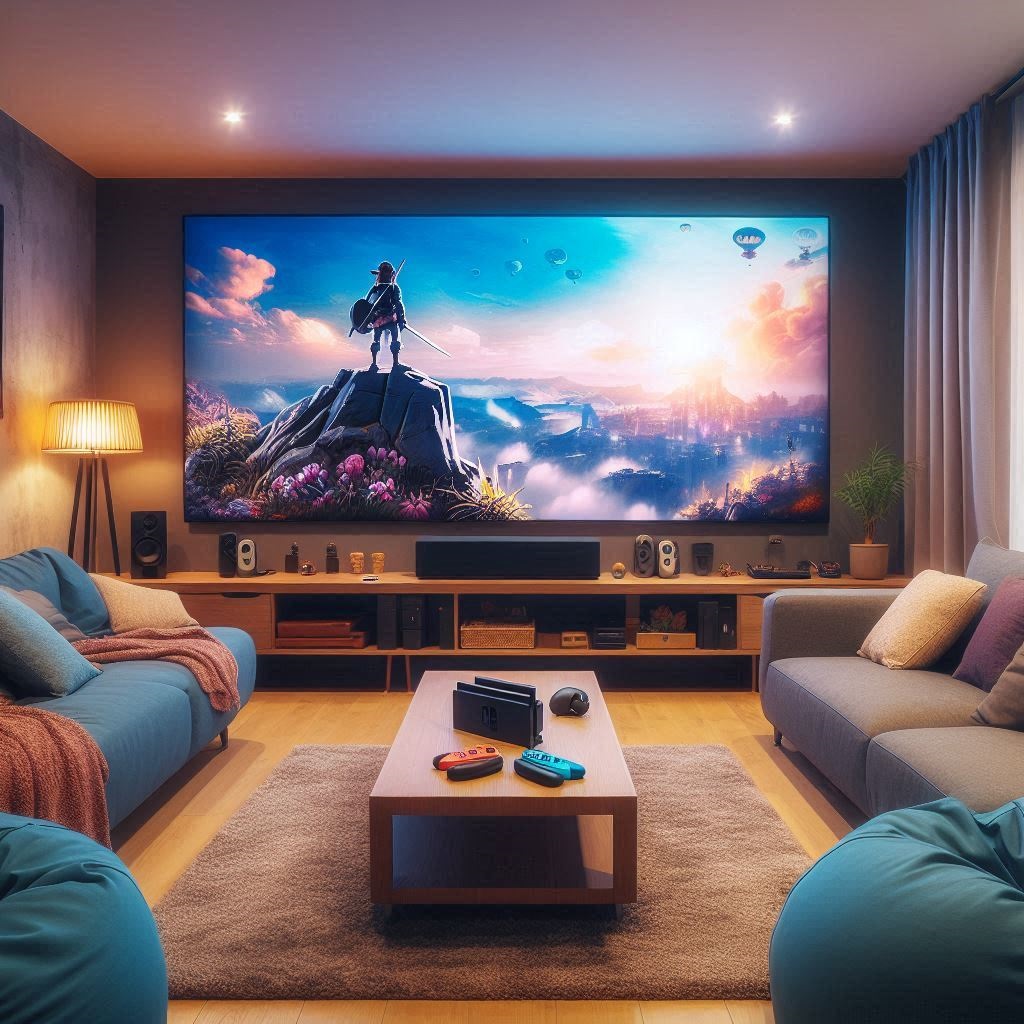
Creating a living room that feels comfortable, stylish, and functional is central to making your home feel welcoming and enjoyable. Here are some design ideas that work well across various styles, ensuring a balanced, beautiful, and versatile living room.
1. Define Your Space with Zones
- If you have a large or open-plan living room, consider dividing the space into functional zones. A seating area for relaxation, a reading nook, or a small work desk can help structure the space while maintaining an open, airy feel. Use area rugs, shelves, or even sofas to subtly create these boundaries.
2. Play with Layered Lighting
- Lighting sets the mood and enhances the functionality of any room, especially the living room. A mix of overhead lighting, floor lamps, and accent lighting allows you to adjust for different activities. For example, use softer lighting for movie nights and brighter options for reading or gatherings. LED or dimmable lights can give you maximum flexibility.
3. Introduce Natural Elements
- Plants, natural woods, and textures like linen or jute can bring an earthy feel to your living room. Indoor plants not only add beauty but also purify the air. Incorporating natural wood through furniture or decor items can add warmth and character to the space.
4. Opt for Multi-Functional Furniture
- Multi-functional furniture pieces, like a coffee table with storage, ottomans that can double as seating, or a sofa bed, are ideal for maximizing space without sacrificing style. This is particularly useful in smaller living rooms where flexibility is essential.
5. Experiment with Color and Texture
- Color can define the atmosphere of your living room. Neutral tones create a calm, sophisticated space, while bold colors bring energy and vibrancy. Consider textured materials like velvet cushions, woven throws, and rugs to add depth and interest to the room without overwhelming the space.
6. Create a Focal Point
- A living room benefits from a clear focal point. This could be a feature wall, a beautiful piece of art, a stylish fireplace, or even a statement sofa. Arrange your seating around this focal point to draw attention and create a cohesive design.
7. Incorporate Personal Touches
- Displaying family photos, artwork, or items that hold sentimental value can make the living room uniquely yours. Shelving units or gallery walls are great for showing off these personal touches while adding visual interest to the room.
8. Mix and Match Styles Thoughtfully
- Don’t be afraid to blend different design styles to create a look that’s both eclectic and cohesive. For instance, a minimalist sofa with mid-century modern chairs or vintage art can add character and depth without clashing.
9. Think About Comfort First
- Comfort is key in the living room since it’s a place for relaxation. Invest in quality seating with supportive cushions, choose soft materials, and consider cozy elements like blankets and pillows. If possible, test out furniture in-store to ensure it’s as comfortable as it looks.
10. Incorporate Technology Elegantly
- Technology is an integral part of many living rooms, but it doesn’t have to be the centerpiece. Consider ways to integrate your TV, speakers, or game consoles so they blend seamlessly into the decor. Concealed wiring and a mounted TV can help keep the space uncluttered.
11. Flooring Choices
- Hardwood Floors: Classic and durable, hardwood floors work well with various styles, from traditional to modern. They add warmth and sophistication, especially when paired with area rugs to add softness and color.
- Laminate or Vinyl: If you’re looking for a budget-friendly option, laminate or vinyl can mimic the look of wood or tile. They’re easy to maintain and come in a variety of colors and patterns, making them versatile for different aesthetics.
- Carpet: Carpeting provides warmth and comfort underfoot, especially in colder climates. Opt for neutral colors that can match changing wall colors and decor over time.
- Patterned or Decorative Tiles: For a bold statement, consider patterned tiles. They’re particularly striking in smaller spaces or as an accent area near the entrance to the living room.
12. Wall Treatments: Paint or Wallpaper?
- Paint: Paint is cost-effective and versatile. Neutral colors like beige, grey, or off-white are great for creating a calming base, while accent walls in deep blues, greens, or charcoal greys can add depth and interest.
- Wallpaper: Wallpaper can introduce texture and pattern, and modern options are easier to apply and remove than ever. Consider a subtle geometric or floral print for a traditional look, or opt for bold, large-scale designs to make a statement wall.
13. Curtain Choices
- Sheer Curtains: Sheer curtains are great for letting natural light in while adding a soft, airy feel. They work well in minimalist or Scandinavian designs, particularly when paired with white or light-colored walls.
- Blackout Curtains: For added privacy and light control, blackout curtains are ideal. They’re available in many colors and can add a luxurious feel, especially if you go for heavier materials like velvet or dark, rich colors.
- Layered Curtains: For flexibility, layer sheer curtains with heavier drapes. This allows you to adjust the amount of light and privacy throughout the day while adding depth and texture to your decor.
- Patterns and Colors: If you have neutral walls, curtains can be a great place to introduce patterns or colors. For example, patterned curtains can make a room feel lively, while a solid color that contrasts with the wall can provide an elegant touch.
14. Combining the Elements
- To create a cohesive look, consider using a color palette that repeats across your flooring, walls, and curtains. For example, if you have warm wooden floors, choose paint colors or wallpapers in earthy tones or soft neutrals, and select curtains in complementary shades.
- Mix textures to add dimension: smooth painted walls with textured wallpaper on an accent wall, and soft, flowing curtains in linen or cotton blend well with wood or tile floors.
These design ideas can be adjusted to suit different styles and budgets, making it easy to create a living room that’s both practical and beautiful. By focusing on comfort, functionality, and a few personal touches, you can transform your living space into the heart of your home.
If you’re looking for help to update your living, remember you can post your job on Tradesmen.ie and get a number of quotes from rated carpenters, electricians, builders and lots more. With a range of professionals available, you’re sure to find the perfect fit for your project.
Best of luck creating the perfect living room!
Cheers
Oliver Dempsey
Tradesmen.ie
18 November 2024
General Tips for hiring a tradesman
Here are some tips to consider when hiring a tradesman:-
1. Ask for phone numbers of references so that you can check them out
2. Check insurance of the tradesman where insurance is required
3. Hire a suitably qualified architect, building surveyor or building engineer if the job is anything to do with a new build, building renovation or extension






